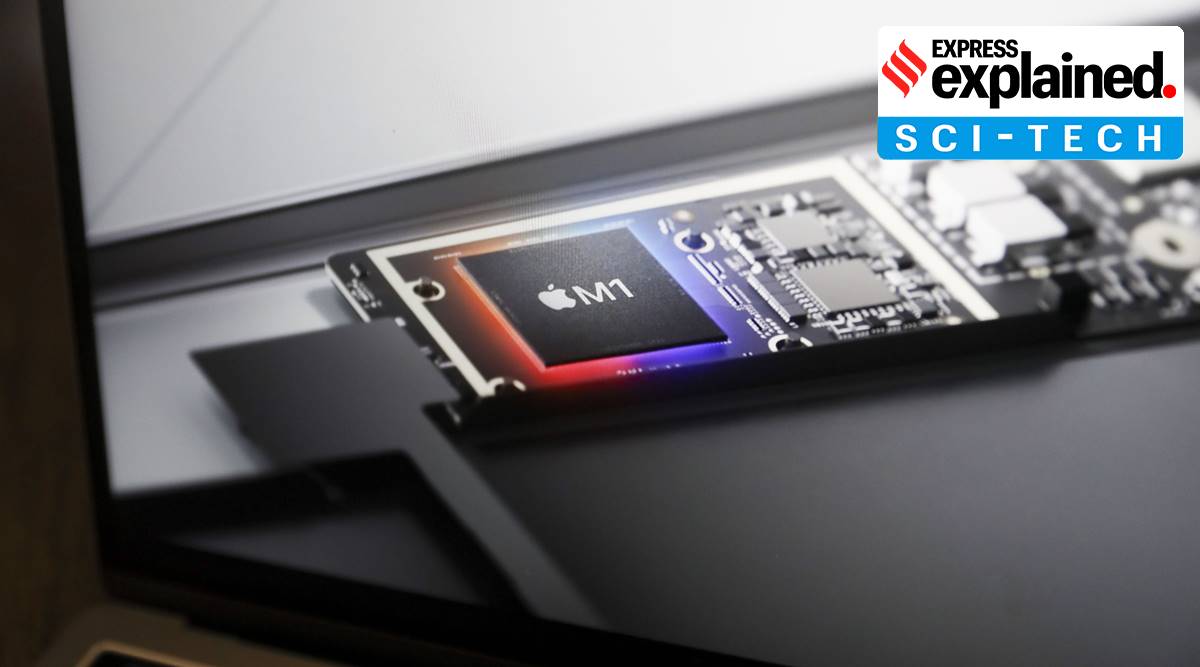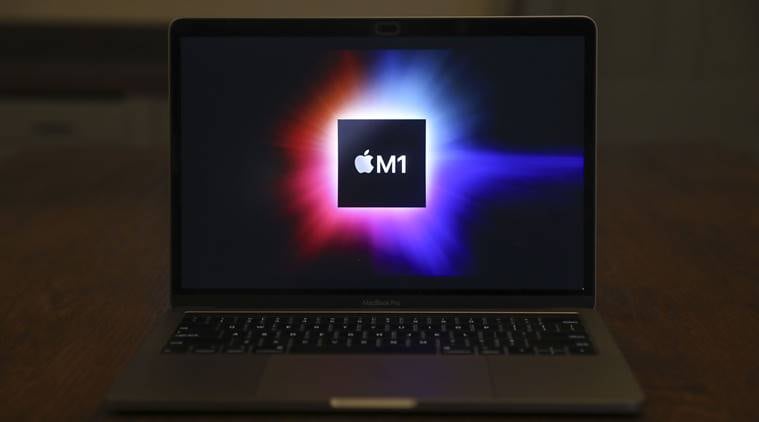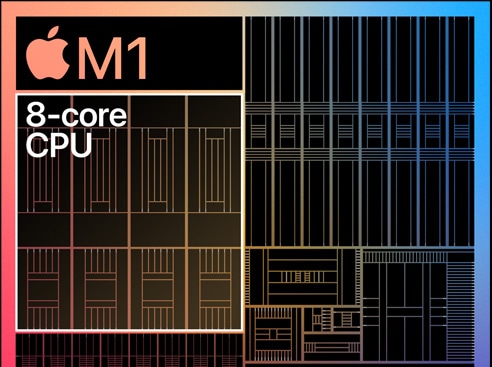Written by Nikhil Bhaskaran , Edited by Explained Desk | Updated: November 29, 2020 3:50:02 pm

This month saw another revolution in computing. This time Apple has done it without its chief storyteller Steve Jobs, and that is maybe why the Apple Silicon M1 has not captured as much attention as some previous Apple breakthroughs. Which is why it is important to understand the significance of this new processor from Cupertino.
A CPU or microprocessor chip is the brain of any computer. Intel is the most popular CPU brand today, though the modern CPU — a combination of hardware and software — was introduced by IBM in 1964 as System/360. Introducing software instructions via Complex Instruction Set Computer (CISC) residing within the processor was the breakthrough then. In these early days, there were just the Japanese who had similar technology. In 1968, Japanese engineer Masatoshi Shima from Busicom began designing a CPU which was then taken over by Intel. The two companies jointly released the first CISC-based 4-bit Intel CPU in 1970, almost six years after IBM.
This triggered a race in the industry to create a new powerful brain CPU. IBM, Intel, Motorola, NEC, Zilog, Toshiba, Fujitsu and a few more got into this race, which was primarily limited to the Americans and Japanese. The Japanese were good with electronics hardware, manufacturing capabilities while the Americans had software and easy access to capital as their advantage.
There was a parallel race happening in RAM technology, the second most important component of a computer. But it had no software component and the advantage eventually went to the Japanese and the Koreans.
CISC was adopted and developed by Intel and that formed the basis of their X86 architecture, also used by AMD. In 1984, based on IBM’s work, Stanford introduced a new more efficient architecture Reduced Instruction Set Computer (RISC). In 1985, ARM (Acorn RISC Machine, later changed to Advanced Risc Machine), a very significant RISC-based architecture of the future was introduced by UK-based Acorn Computers Ltd.
ARM is significant for two reasons. First, it didn’t make CPUs itself, it only wrote the software for cpu and licensed it. So any company could make CPUs using their software. Second, it consumed very little power in comparison to Intel and CISC-based systems.
Also Read | Why Apple making its own computer chips is a big deal

But these were the heydays of Silicon Valley, when US money and software power drove the computer industry. As Microsoft and Intel drove the PC revolution, they didn’t really care about carbon footprints or energy efficiency, Then it was all about packing more transistors into the CPU and reducing its size to get more speed at smaller sizes. Microsoft and Intel won the PC race hands down. Even Apple briefly experimented with ARM, but failed and ARM and RISC architecture eventually ended up on the backburner.
But times change, situations change. Steve Jobs walked into the annals of history when he introduced a small handheld computer-cum-phone, the iPhone, which turned everything on its head. All of a sudden, power efficiency and battery life of devices had become pivotal and this made Apple choose ARM. Smartphones have the same architecture of a computer — an all-important CPU with RAM, GPU and storage held together by an operating system.
The smartphone era triggered a new CPU race with everyone from Apple to Qualcomm, Samsung, Huawei and Hitachi licensing ARM core to make their own CPUs for smartphones. As the smartphone segment grew, ARM introduced more features making it a very powerful, yet power efficient architecture. There were parallel races on at the same time to create operating systems and apps that sync with these devices.

So, how is the Apple M1 revolutionary? M1 is the result of a reverse disruption with what has worked in smartphones being taken to the PC industry. M1 uses ARM and finally brings power efficiency into the PC domain which was long overdue. But how about performance? PCs need to do a lot more simultaneously compared to smartphones. A PC’s system performance depends not just depends on the CPU and data needs to be exchanged in the system between the CPU, GPU and RAM. All of these need to be optimised for the system’s overall optimal performance. The M1 has created an integrated chip with the CPU, GPU and RAM all packed into one with a tiny footprint using 5 nanometre fabrication. This tight integration in a smaller footprint makes it the most efficient chip available for consumers to date. On the contrary, Intel is still at a larger 14 nm size for the same. 📣 Express Explained is now on Telegram
Is there more to the M1?
These systems will also have Artificial Intelligence (AI) built in. AI mimics and creates human brain-like neural networks in these chips. This is what Apple calls Bionic processors, or Neural Processing Units (NPU) in more technical terms. The M1’s NPU makes it fully future ready while optimally packing the entire system into one chip. It is the first time in the history of computers that a mainstream processor has a full system on a single chip plus NPU for AI.
Is this the trend of the future? Will more and more chips get integrated and power efficient? Will digital transformation with AI also be driven by the marketing of big companies for speed. Will power efficiency and carbon footprint once again take a back seat? For the answers we will have to wait and see.

This time though the race is between America and China. Chinese companies like Huawei, Bitmain and Phytium have their own integrated chips based on ARM. The Chinese are betting on efficiency at a lower price while American companies use their marketing power to mesmerise us with the latest possibilities.
Where does India stand in all this?
India has Shakti. Designed by IIT Madras, it is a CPU-only chip using RISC V, which is not the same RISC used by ARM. While the Apple M1 is on 5nm, Intel on 14 nm, the Shakti is on 22nm. So India still has a long way to go and it might be better for the country to focus on software and lead the race that be an also-ran in the hardware space.
Nikhil Bhaskaran is founder of startup Shunya OS, a built-in AI operating system for the next generation of devices to be launched in 2021. He is recognised among 40 global Innovators by ARM.
The Link LonkNovember 29, 2020 at 04:50PM
https://ift.tt/3o3xe0S
Expert Explains: Why Apple M1 chip could be the start of something big - The Indian Express
https://ift.tt/2RGyUAH
Chips

No comments:
Post a Comment